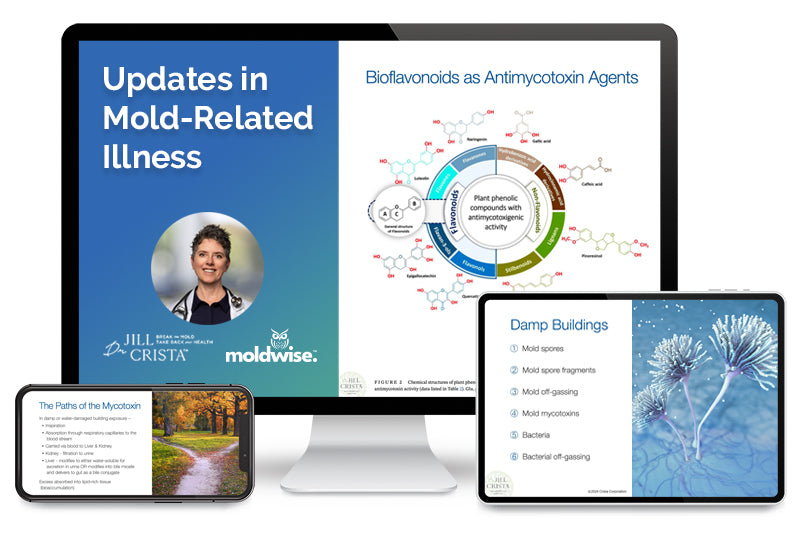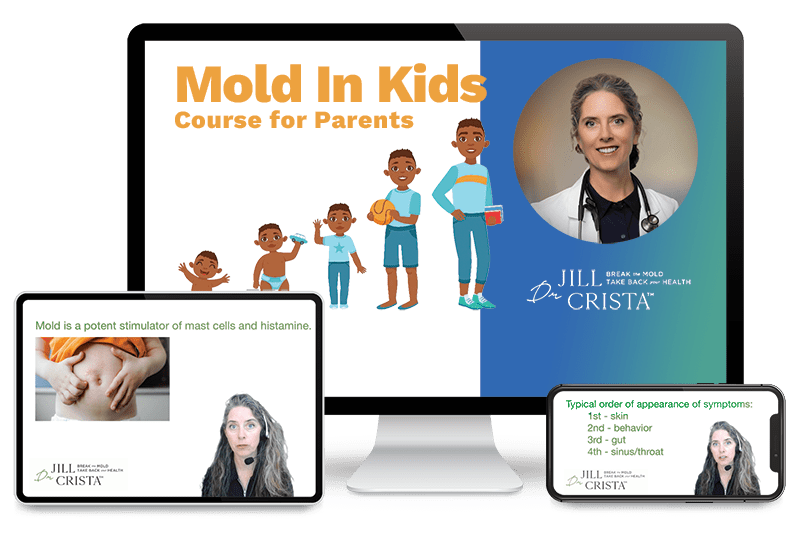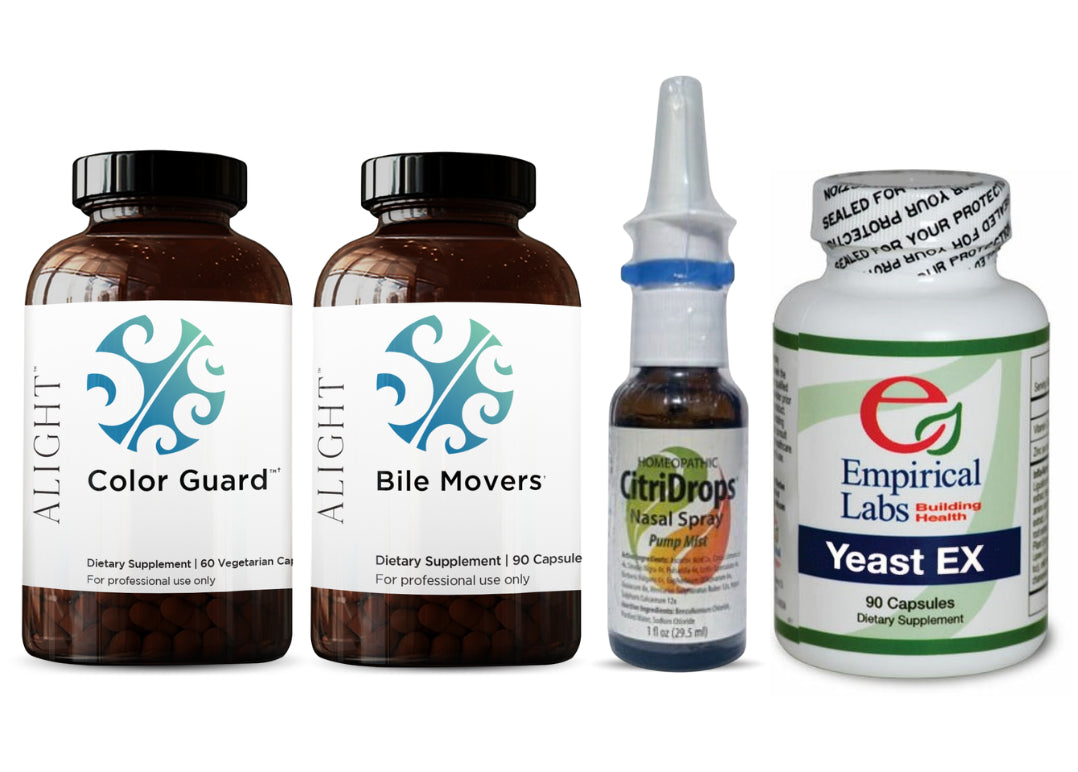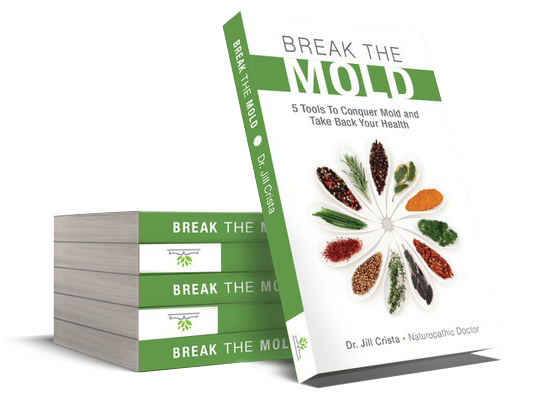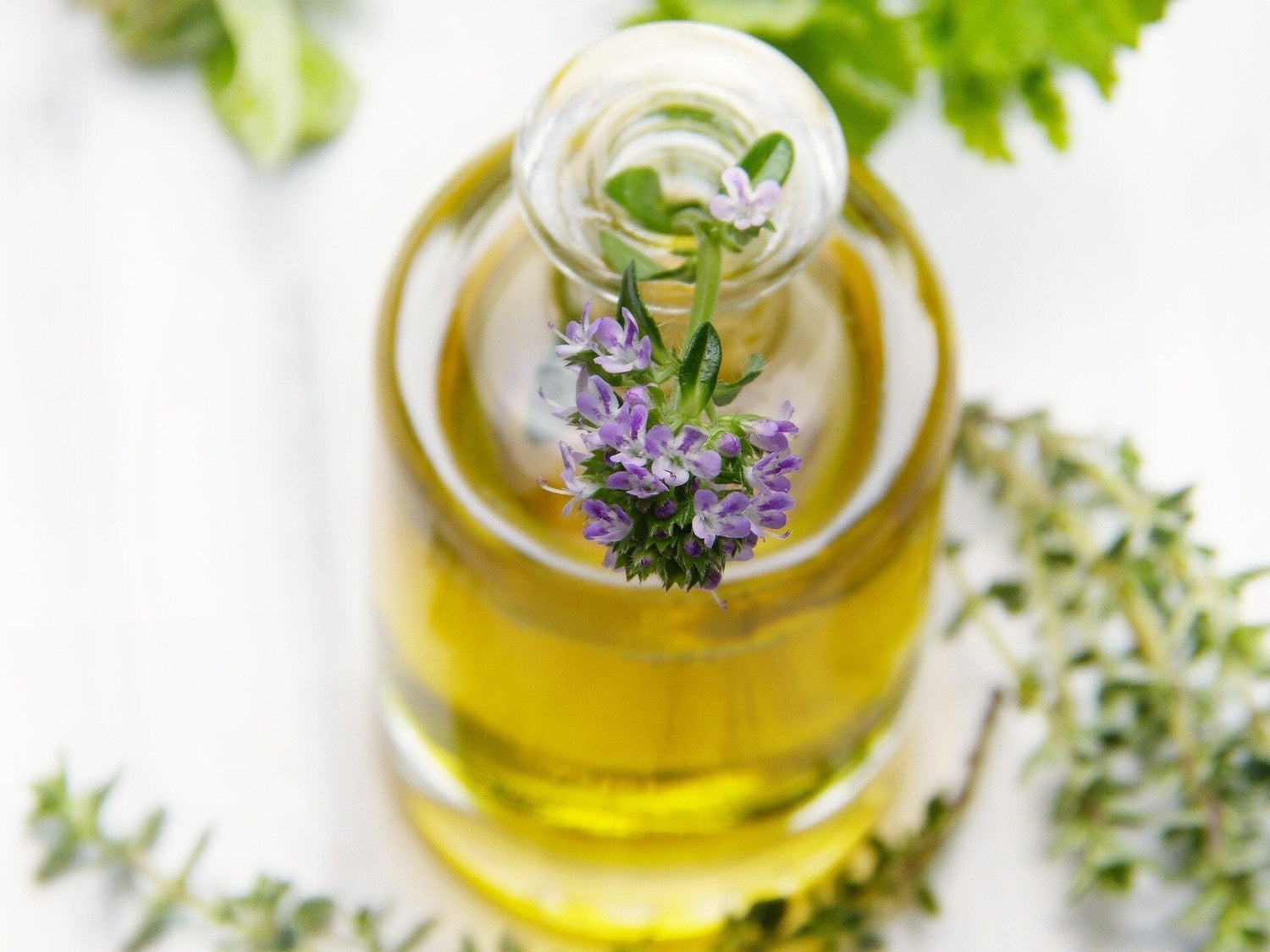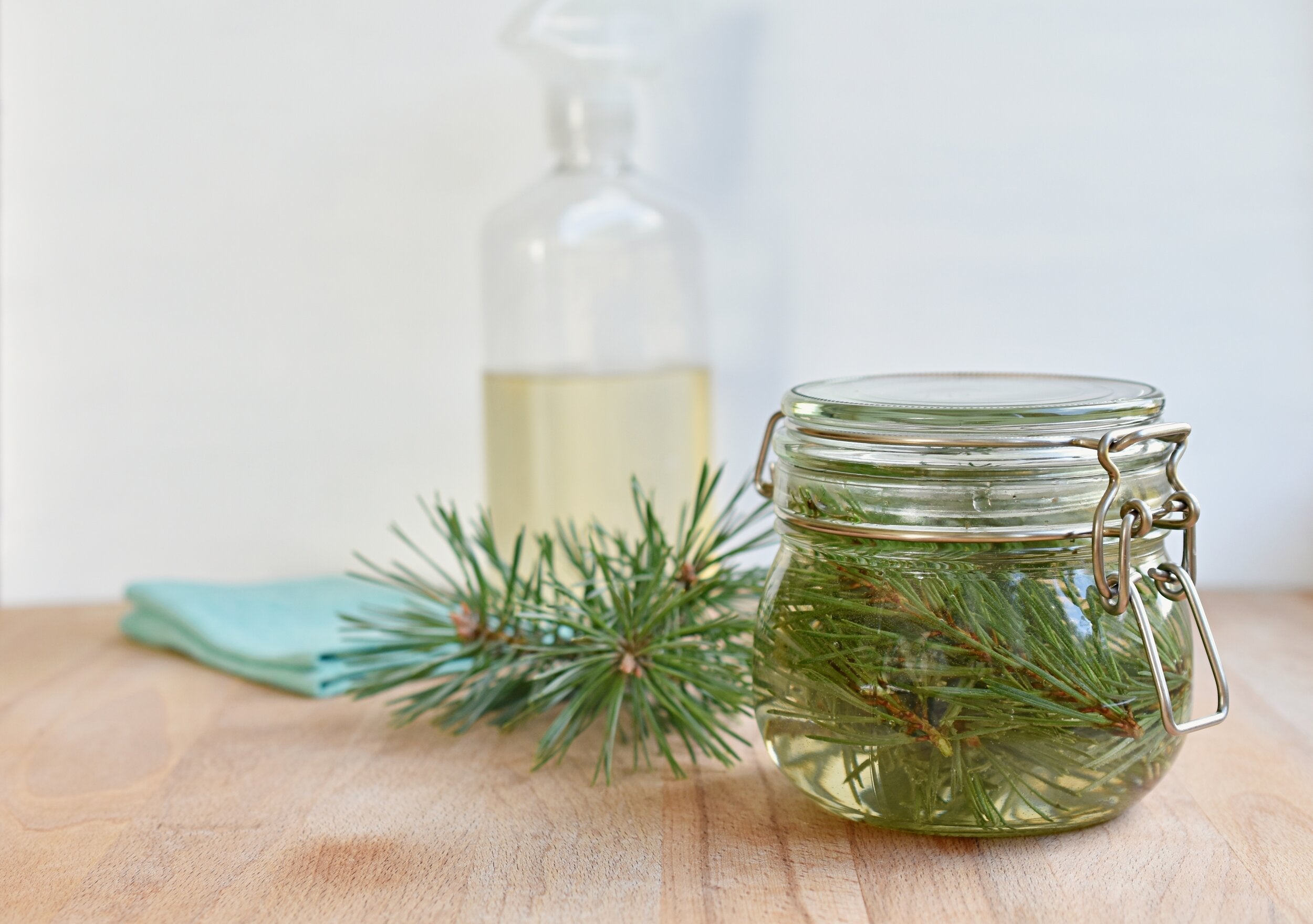Wondering if using essential oils indoors can help to stop mold? Hi, I’m Dr. Jill Crista, naturopathic doctor, mold expert and author of Break the Mold.
Today we’ll bust myths about using essential oils indoors and explore why thyme oil belongs in your mold‑fighting toolbox. Ready to harness the power of essential oils? Let’s dive in!
Clearing Up Misconceptions About Essential Oils
Some say that using essential oils indoors may increase the indoor mycotoxin load, but science and my clinical experience reveal otherwise:
- Myth Busted: No credible studies show thyme and other essential oils mentioned in my book increase mycotoxins in the air.
- Anti-mycotoxic Effect: In fact, used correctly, certain essential oils reduce the mold spore’s ability to make mycotoxins to defend themselves.
- Safe for Most: The essential oils featured in my book – including thyme, cedar, and tea tree – are well tolerated by most mold‑sensitive patients. Always start low and observe.
- Aldehyde Concerns: Note that mold does spit out aldehydes, and essential oils also contain aldehydes. Some mold-sensitive people may react, so always patch‑test or inhale from a distance first.
For a full breakdown of safe, effective essential oils for indoor use, see the Remediation chapter in my book Break the Mold.
Why Thyme Oil Is a Mold-Fighting Star
One of my favorite essential oils to use indoors is thyme or thymol, which has been shown to almost completely inhibit mold’s ability to make mycotoxins. Here’s why it shines:
- Stops Mold Growth: Stops the growth of Penicillium verrucosum, a common indoor mold producing ochratoxin.
- Blocks Mycotoxins: Thyme oil prevents mycotoxin production, supporting safer indoor air.
- Science-Backed: Multiple studies confirm thyme’s superior antifungal profile, making it a top pick for environmental air and surface treatment.
Learn more about thymol’s mechanisms and indoor uses in the Remediation chapter of my book Break the Mold.
How to Use Thyme Oil for Safe Indoor Spaces
I’m a big fan of using essential oils indoors, if my patients can tolerate them. When used thoughtfully, thyme oil can clean your air and surfaces without risking sensitivity:
- Diffuse Sparingly: Add 2-3 drops of thyme oil to your diffuser and run for 15-20 minutes in a closed room. Ventilate afterward.
- Clean Surfaces: Mix 5 drops of thyme oil with 4 ounces of witch hazel and a teaspoon of white vinegar. Shake well, then spray on tile, glass, or non-porous surfaces. Wipe after 5 minutes.
- Spot Testing: If you are sensitive, inhale from a cotton ball with one drop of thyme oil placed 2 feet away. If no irritation after 10 minutes, you’re likely safe to diffuse at low dose.
Always monitor air quality and personal reaction. For remediation tips I’ve learned from the experts I trust, consult the Remediation chapter in Break the Mold.
Essential Oil Recipes for Indoor Air & Surfaces
Here’s my trusty DIY all-purpose cleaning blend:
When you need a cleaning solution that works against mold but won’t trigger chemical sensitivity, this is the formula I rely on.
It’s designed specifically for non-porous surfaces such as tile, sealed countertops, glass, and metal. If you’re dealing with porous materials like drywall, fabrics, or carpet, you’ll need different remediation methods.
What You’ll Need
- Disposable cleaning cloths
- Disposable gloves
- Funnel
- Teaspoon measuring spoon
- 1-cup measuring cup
- 1-quart glass container (avoid plastic. Essential oils can leach chemicals from it)
Ingredients
- 3 cups white vinegar
- 1 cup witch hazel
-
3-4 teaspoons mold-fighting essential oils (approximately 300-400 drops in total; choose at least two different oils for greater effectiveness)
Essential Oils Known for Neutralizing Mold & Mycotoxins:
- Cedar leaf (Thuja plicata)
- Rosemary leaf (Rosmarinus officinalis)
- Ajwain seed (Trachyspermum copticum L.)
- Holy basil leaf (Ocimum sanctum, O. basilicum)
- Cumin seed (Cuminum cyminum L.)
- Tea tree (Maleleuca alternifolia)
Thyme leaf (Thymus vulgaris) - Clove (Eugenia caryophyllata, E. aromatica)
- Eucalyptus (Eucalyptus species)
- Scotch pine (Pinus sylvestris)
How to Make It
- Add vinegar, witch hazel, and your selected essential oils to the glass container.
- Seal tightly and shake to blend.
- This will yield about 1 quart of cleaning solution.
- Spray directly onto hard surfaces, then wipe with a disposable cloth.
- For gentler cleaning needs, mix equal parts cleaning formula and water.
- Always spot-test before using. Stronger concentrations can harm some surfaces.
- Store in a cool, dry location and use within 12 months.
Always use a fresh cleaning cloth to prevent spreading mold spores between surfaces.
Encourage antifungal action on non‑porous surfaces. Use gloves, spray, let sit 10 minutes, then wipe clean.
Tips to Combat Mold with Essential Oils
Here’s how to integrate thyme oil into your plan to break the mold and take back your health:
-
Combine Strategies
Use indoor essential oils in tandem with other mold fighting tools. See the Fight chapter in my book Break the Mold. -
Rotate Oils
Alternate thyme with oregano, tea tea, and rosemary to prevent microbial tolerance. -
Follow Air Exchange
After diffusing or spraying, ventilate for 10 minutes to clear spent volatiles and bio‑debris.
You’re Ready to Break the Mold and Thrive!
Essential oils like thyme offer a safe, research‑backed way to reduce indoor mold growth and mycotoxin production. Pair them with targeted nutrition, and remediation steps to reclaim your space and your health.
Save this guide, share it with friends facing mold challenges, and grab your copy of Break the Mold to access the full toolkit – detailed protocols, dose charts, and building tips. Join my newsletter for more mold‑smart tips delivered weekly.
Disclaimer This content is health information and not intended as personal medical advice. Viewing will not establish a doctor-patient relationship. It is not intended to diagnose, treat, cure, or prevent any disease or medical condition. The information discussed is not intended to replace the advice of your healthcare provider. Reliance on information provided by Dr. Jill Crista, employees, or others appearing at the invitation of Dr. Crista is solely at your own risk.

